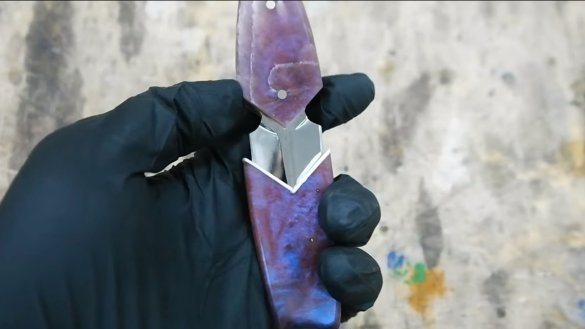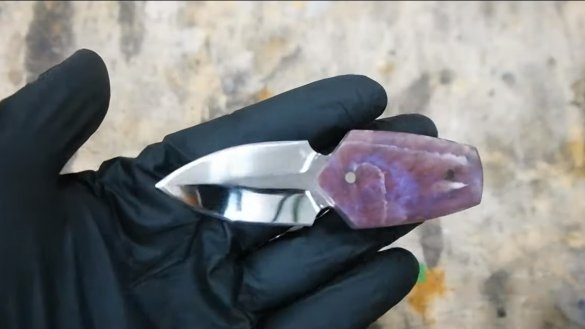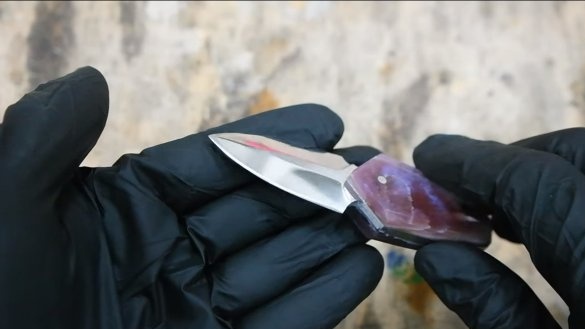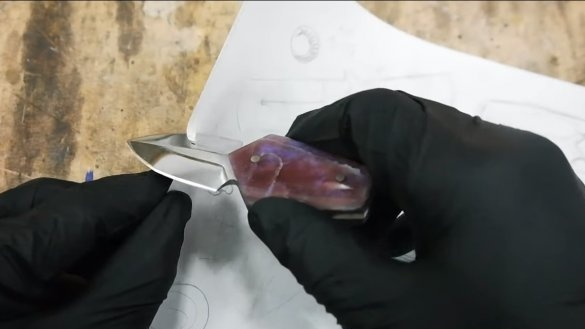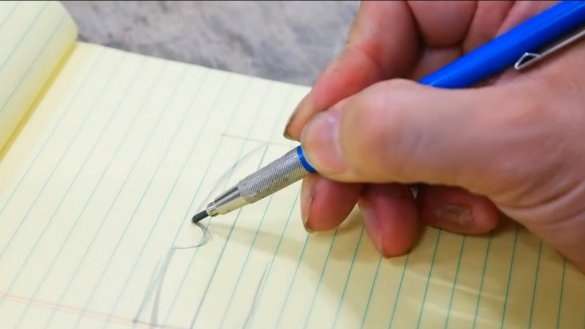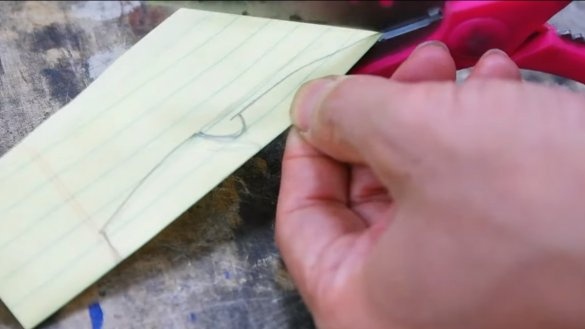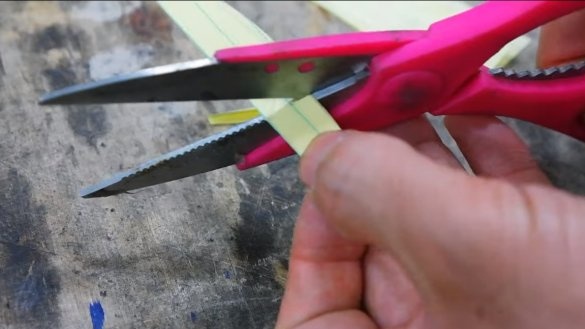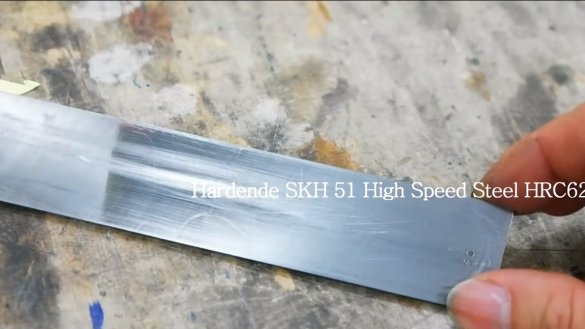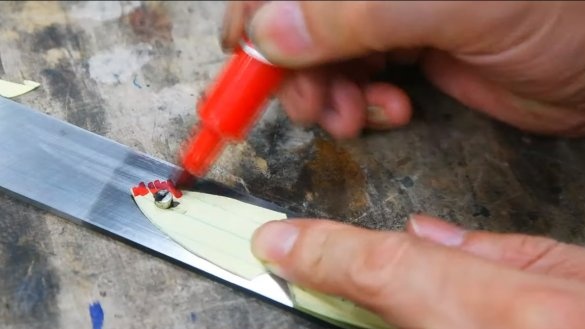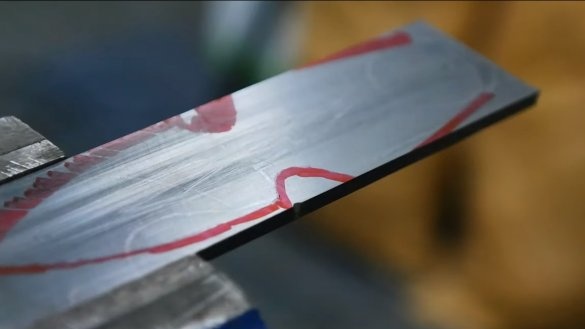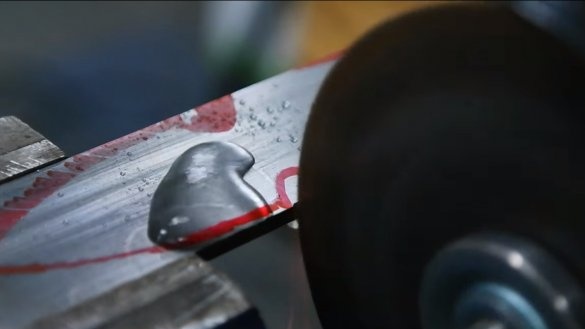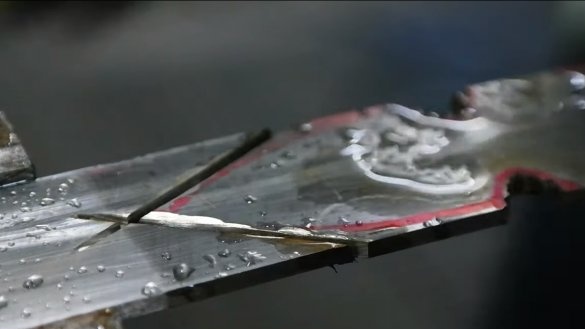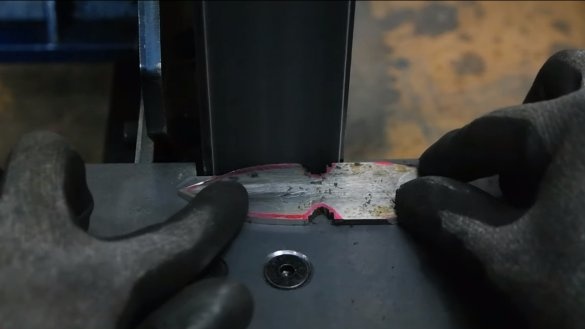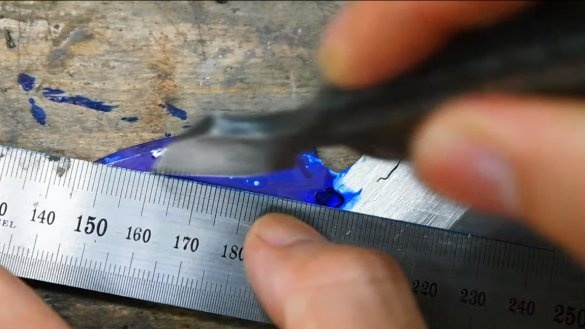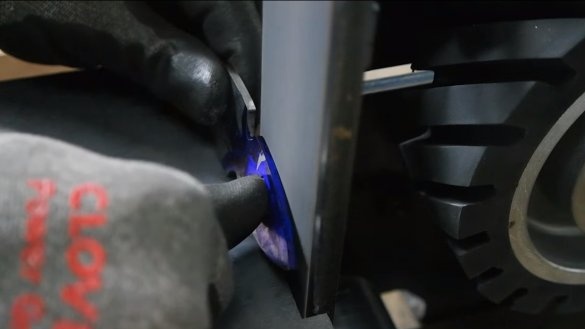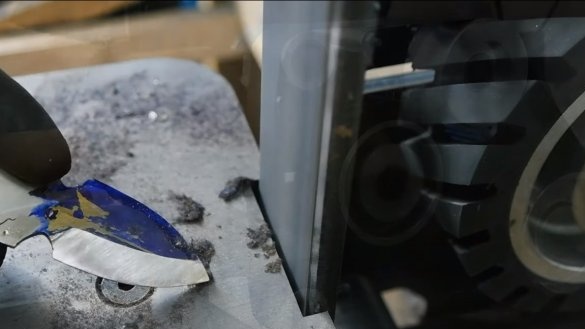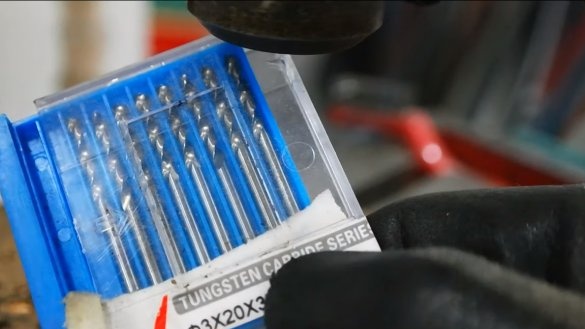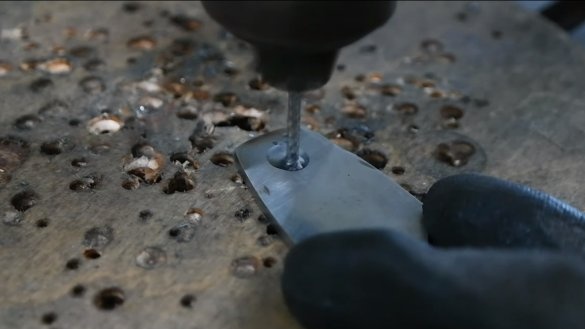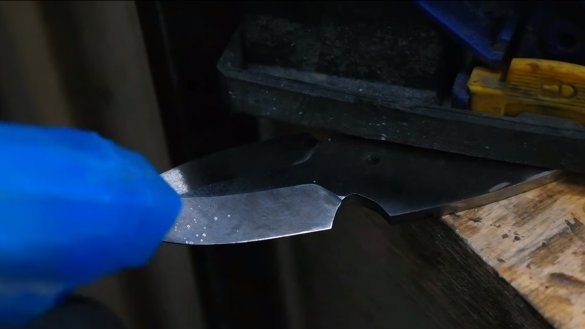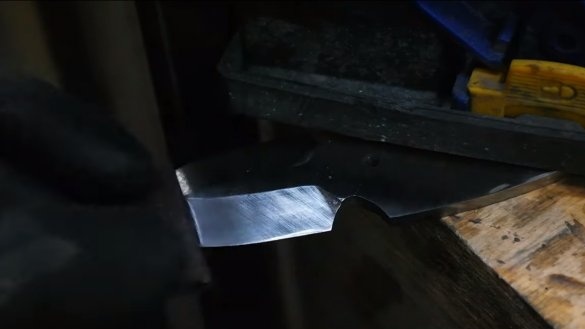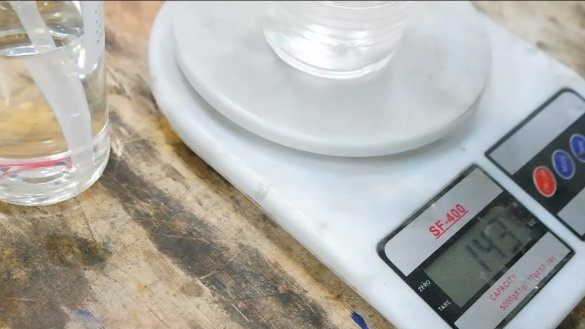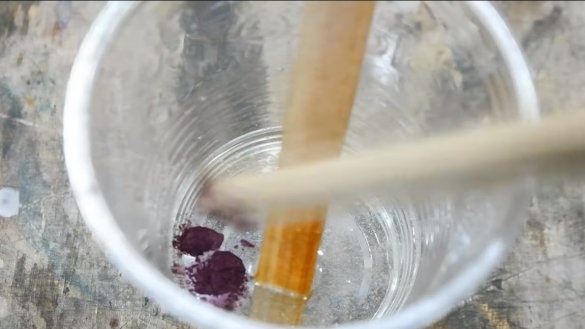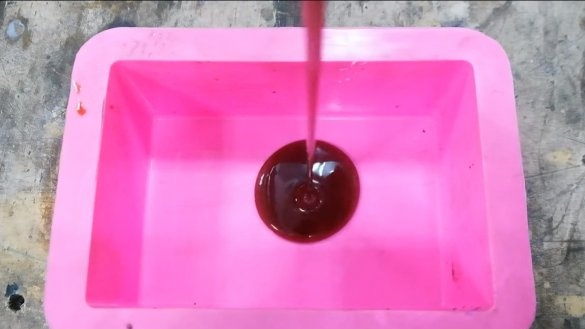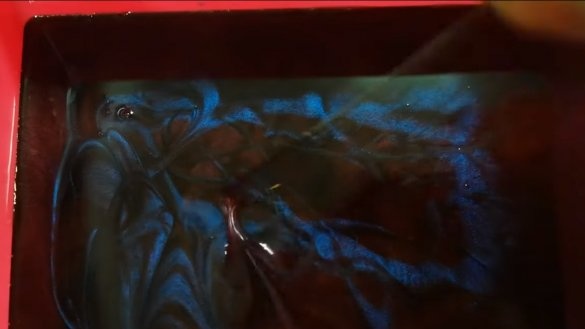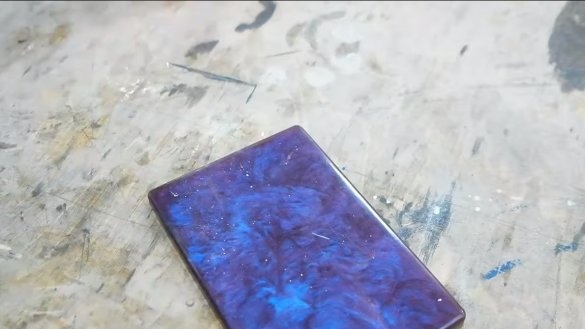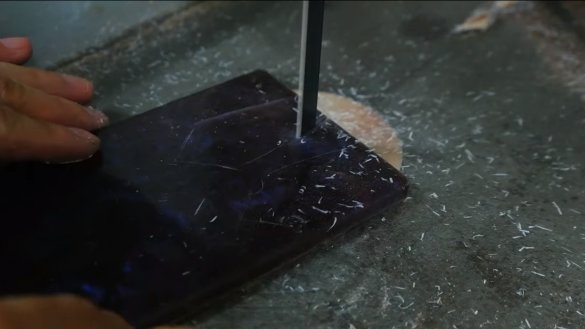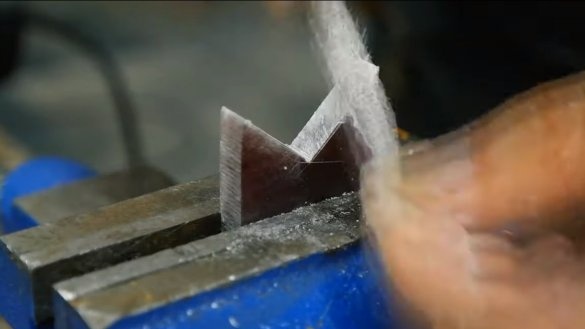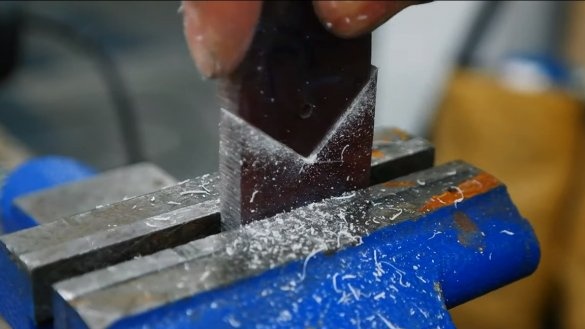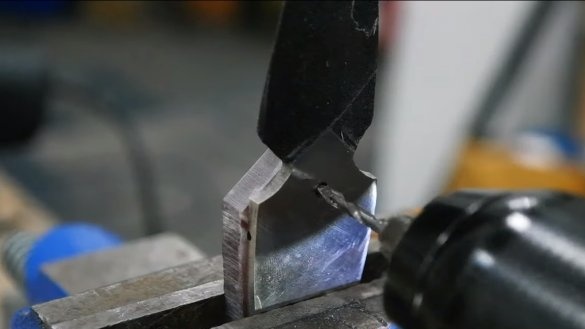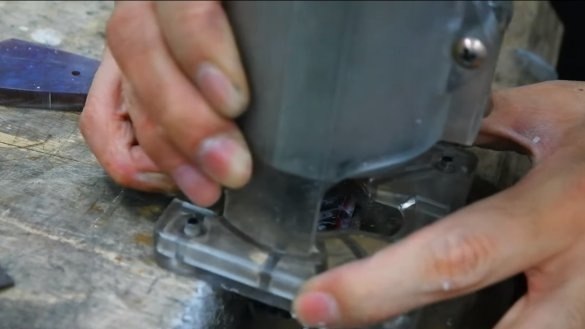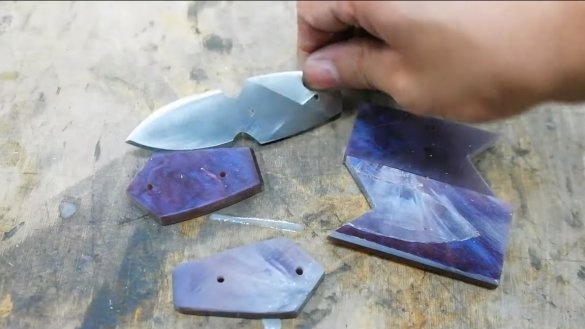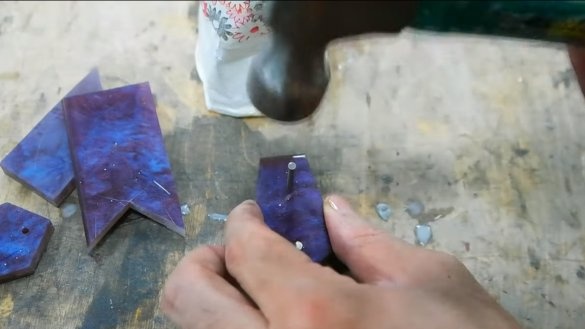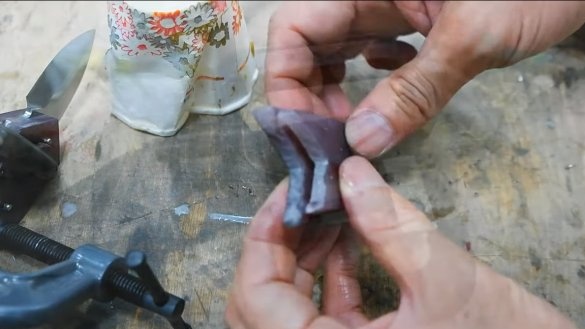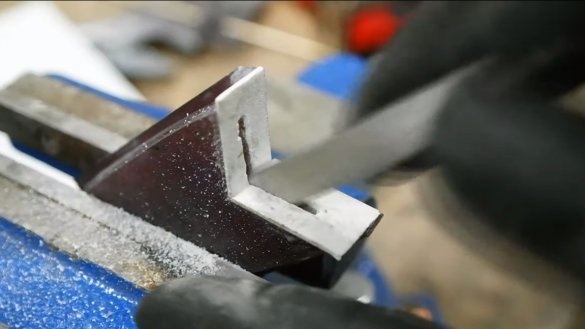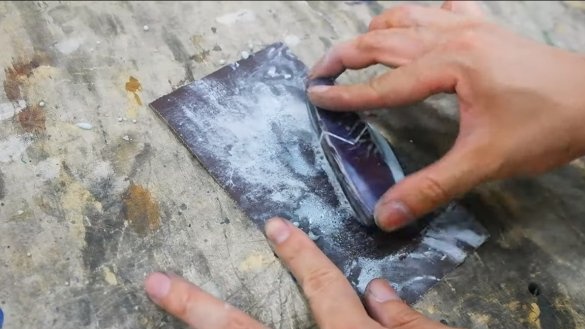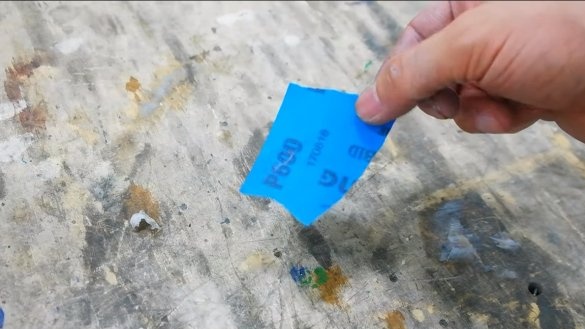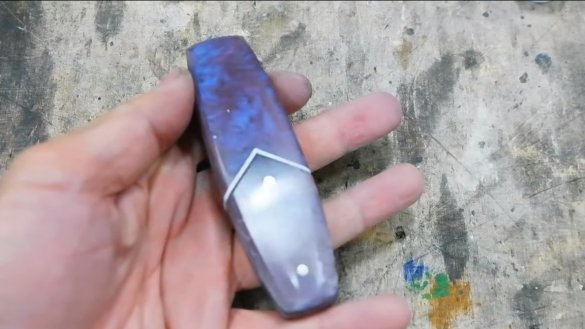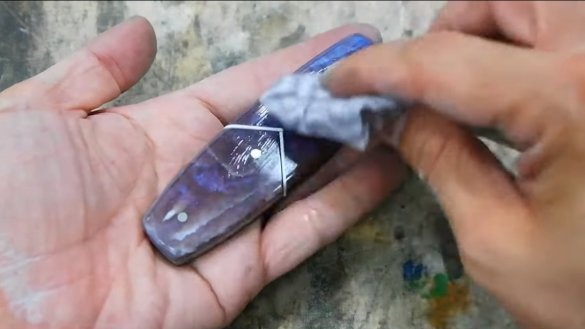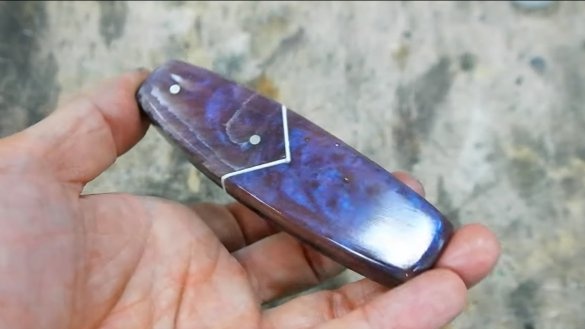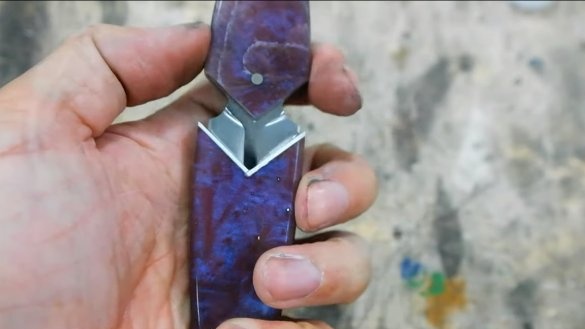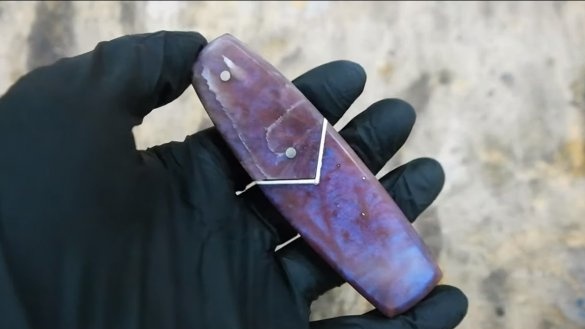I welcome fans to craft, today we will consider how to make a small pocket knife. Homemade unique in its construction, the handle and scabbard are made in such a way that the knife, when it is in its sheath, forms an integral product resembling sea stone. The knife is made of already hardened steel, the hardness of which is 62HRC. The blade cuts perfectly, is sharpened to the state of the blade, and for its manufacture it is not necessary to have a forge furnace.
The handle and scabbard are made of epoxy resin, the homemade product looks interesting, and yet this whole thing fits safely and compactly into a pocket. If you are interested in the project, I propose to study it in more detail!
Materials and tools used by the author:
Material List:
- epoxy resin;
- dyes for epoxy;
- ;
- carbon hardened steel (author SKH 51);
- nails or brass rods for pins;
- epoxy varnish (preferably).
Tool List:
- pencil, paper, scissors (for the template);
- marker;
- ;
- belt sander;
- a drill or a drilling machine (as well as drills with carbide tips);
- electronic Libra;
- tape cutting machine;
- manual milling cutter (optional).
The process of making a knife:
Step one. Cut the knife profile
First of all, we need to draw a knife profile on paper, and then we cut out the template with scissors and transfer it to the blank. The author transfers the template to metal using a marker. Now you can start cutting, the author works with a grinder. Our steel is already hardened, so it is impossible to overheat it, otherwise there will be a vacation of steel. We pour water on the steel and cut it, the water will boil in case of overheating of the steel.
Cut problem areas into pieces where necessary, remove excess metal with a thick grinding disc. At the end, we refine the circuit with a belt sander and a drill, if any.
Step Two Slopes
We need to make descents on the blade, they are formed only on one plane, there will be two descents.We paint over the treated area with a marker so that the marking and the grinding zone are clearly visible. Well, then we get to work, here we need a belt sander. When grinding, we also remember that it is impossible to overheat steel, so we periodically cool the blade in a container of water.
Step Three Holes and revision of the blade
Two holes need to be drilled in the handle area, this will cause problems because our steel is hardened. In this case, drills with carbide tips will help us. First, drill a drill with a minimum diameter, and then it will be much easier to drill a hole to the desired diameter.
At the end of the step we take fine sandpaper and grind the knife plane. To make paper work well, we work with soapy water or use WD-40 for cleaning.
Step Four Sheath and handle blanks
The author used epoxy resin as a material for the sheath and handle. We will need a mold made of silicone, in which we can pour the resin to get the sheet material.
Knead the resin by weight, add dye and pour into the mold. To get marvelous patterns, mix a little resin separately and add a dye of a different color. Pour a little resin into the main part and form the desired pattern with a clean wooden stick or other object.
After the resin hardens, we pull it out of the mold, we get a workpiece in the form of sheet material. We cut out two pads on the handle from the material, as well as two parts for the sheath. In addition, we need a thin G10 or textolite, which goes to the insert.
Step Five Completion
At the end, we install the pads on the pins, you can use ordinary nails as pins. Everything is glued together with epoxy glue.
The sheath is also glued from the spirit of the workpieces, between the parts you need to insert a spacer, thanks to which we get a gap for the blade. We tighten everything well with clamps and leave to dry.
When the glue hardens, you can form the desired profile of the handle and scabbard, you can work with files and sandpaper. As a result, we perform fine grinding with fine sandpaper, you can grind it on wet. Well, for an ideal appearance, we cover the parts with varnish for epoxy resin, which will make the material transparent and will protect the resin from the harmful effects of sunlight. In extreme cases, instead of varnish, you can use the same transparent epoxy resin.
That's all, now the knife is ready, the homemade product looks beautiful, the knife is compact and convenient. The author managed to sharpen the homemade product to the state of the blade, the knife easily cuts paper. The project is completed on this, I hope you liked the homemade work, and you found useful thoughts for yourself. Good luck and creative inspiration, if you decide to repeat this. Do not forget to share your ideas and homemade things with us!

